
Journey Through History at the National Memorial Museum of Forced Mobilization
Explore the National Memorial Museum of Forced Mobilization in Busan and uncover Korea's poignant history during the Japanese occupation.
The National Memorial Museum of Forced Mobilization under Japanese Occupation in Busan offers a profound insight into Korea's painful past. This museum serves as a poignant reminder of the struggles faced during the Japanese occupation, making it an essential stop for history enthusiasts and curious travelers alike.
A brief summary to National Memorial Museum of Forced Mobilization under Japanese Occupation
- Daeyeon-dong, Nam-gu, Busan, KR
- +8251-629-8600
- Visit website
- Tuesday 9:30 am-5:30 pm
- Wednesday 9:30 am-5:30 pm
- Thursday 9:30 am-5:30 pm
- Friday 9:30 am-5:30 pm
- Saturday 9:30 am-5:30 pm
- Sunday 9:30 am-5:30 pm
Local tips
- Plan your visit during weekdays to avoid larger crowds.
- Allocate at least two hours for a thorough exploration of the exhibits.
- Check the museum's website for any special exhibitions or events during your visit.
- Consider joining a guided tour for deeper insights into the exhibits.
- Photography may be restricted in certain areas; be mindful of signage.
Getting There
-
Car
If you are traveling by car, start by navigating to Daeyeon-dong, Nam-gu, Busan. Use a GPS device or a navigation app to enter the coordinates 35.12499, 129.092335. Follow the main roads leading to Busan, and look for signs directing you to Nam-gu. Upon arrival in the area, you should find parking available near the museum. Note that parking fees may apply, so prepare some cash or a card.
-
Public Transportation (Bus)
For those using public transportation, locate the nearest bus station in Gwandong Region. Take a bus that routes to Busan City. Upon arriving in Busan, transfer to bus number 1003 or 27, which goes directly to Daeyeon-dong, Nam-gu. Stay alert for announcements or signs as you approach your stop. The museum is within walking distance from the bus stop; simply follow the signs to the museum. A bus fare of approximately 1,200 KRW is expected.
-
Public Transportation (Subway)
If you prefer the subway, head to the nearest subway station and take Line 1 towards Seomyeon Station. Transfer to Line 2 at Seomyeon Station and board the train heading to Jangsan Station. Get off at Daeyeon Station. From Daeyeon Station, exit the station and follow the signs towards Daeyeon-dong; the museum is a short 10-minute walk away. Subway fares typically range from 1,250 KRW to 1,500 KRW, depending on the distance.
Discover more about National Memorial Museum of Forced Mobilization under Japanese Occupation
Iconic landmarks you can’t miss
Korea-UK(United Kingdom) First Encounter Monument
2.8 km
Discover the Korea-UK First Encounter Monument in Busan, a historic landmark celebrating the enduring friendship between Korea and the United Kingdom.

Busanjinseong Fortress (Jaseongdae Japanese Fortress)
3.1 km
Discover the historical significance and stunning views at Busanjinseong Fortress, a key landmark in Busan’s rich architectural heritage.

Namcheon-dong Cherryblossom Street (in Spring)
3.1 km
Discover the enchanting beauty of Namcheon-dong Cherryblossom Street in Busan, where vibrant blossoms create a stunning springtime spectacle.

Beacon Fire Station in Hwangryeong Mountain
3.7 km
Discover the historical Beacon Fire Station in Hwangryeong Mountain, a stunning landmark showcasing Busan's rich heritage and breathtaking landscapes.

Gwangan Blue Moon
3.9 km
Discover the charm of Busan with a stay at Gwangan Blue Moon, a cozy motel near stunning beaches and vibrant local attractions.

Gwangalli Tourist Information Center
4.0 km
Discover Busan's vibrant culture and attractions at the Gwangalli Tourist Information Center, your essential guide for an unforgettable travel experience.

Seomyeon Museum
4.2 km
Explore the vibrant artistic landscape at the Seomyeon Museum, a contemporary art gallery in the heart of Busan, showcasing local and international talent.

Orange Bada
4.2 km
Explore the unique offerings of Orange Bada in Busan, where local craftsmanship meets contemporary design in a charming home goods store.

Samjung Tower
4.3 km
Explore the dynamic Samjung Tower in Busan, where shopping, dining, and entertainment come together in a vibrant cultural experience.

Chinatown
5.1 km
Explore the vibrant streets of Chinatown in Busan, where authentic Chinese culture meets a rich culinary experience.

Choryang Ibagu-gil
5.1 km
Explore the vibrant Choryang Ibagu-gil in Busan, a cultural pathway filled with stunning murals, local cuisine, and rich history.

168 Stairs
5.2 km
Discover Busan's vibrant culture at the 168 Stairs, where art meets nature in a stunning ascent to breathtaking views.

Kim Min-Bu Ovservatory
5.3 km
Experience breathtaking views of Busan from the Kim Min-Bu Observatory, a top tourist attraction perfect for photography and relaxation.

National Maritime Museum
5.3 km
Explore Busan's rich maritime history at the National Maritime Museum, where culture and the sea come together in an unforgettable experience.

Suyeong Historical Park
5.5 km
Discover the rich history and natural beauty of Suyeong Historical Park in Busan, a perfect blend of culture and relaxation for every traveler.

Unmissable attractions to see
UN Memorial Cemetery in Korea
0.4 km
Explore the UN Memorial Cemetery in Korea, a serene tribute to peace and sacrifice, located in the heart of Busan.

Busan Museum
0.5 km
Explore the rich history and vibrant culture of Busan at the renowned Busan Museum, home to an impressive collection of artifacts and art.

Busanjin Cheokhwabi
0.5 km
Discover the historical charm of Busanjin Cheokhwabi, a must-see tourist attraction in Busan, South Korea, reflecting the city's rich cultural heritage.

Peace Park
0.8 km
Explore Peace Park in Busan: a serene destination blending nature and history for a reflective travel experience.

Uam-dong Urban Forest
1.7 km
Explore the serene Uam-dong Urban Forest, a beautiful green space in Busan, ideal for relaxation, picnics, and scenic strolls amidst nature’s beauty.

Vaunce Bounce Trampoline Park
2.1 km
Experience the thrill of jumping at Vaunce Bounce Trampoline Park in Busan—an exciting destination for families and thrill-seekers alike.

Sinseondae Terrace
2.5 km
Discover the stunning coastal views and serene atmosphere at Sinseondae Terrace, a must-visit destination in Busan for nature lovers.

KBS Busan Hall
2.7 km
Discover the Cultural Heart of Busan at KBS Busan Hall - A Premier Concert Venue with Exceptional Acoustics and Unforgettable Performances.

Igidae
2.7 km
Explore the breathtaking coastal views and tranquil landscapes of Igidae Park, a must-visit natural wonder in Busan, South Korea, perfect for relaxation and adventure.

Igidae Seopjari
2.7 km
Explore the breathtaking landscapes and serene trails of Igidae Seopjari, a hidden gem on Busan's stunning coastline.

Igidae Hangout
2.9 km
Experience the breathtaking coastal views and serene ambiance of Igidae Hangout in Busan, a perfect escape for nature lovers and urban explorers.

Namcheon Seaside Park
3.2 km
Discover the beauty of nature and the charm of Busan at Namcheon Seaside Park, a serene escape with stunning ocean views and vibrant culture.

Busanjin Market
3.3 km
Experience the lively atmosphere and vibrant culture of Busanjin Market in Busan, a must-visit destination for fashion lovers and cultural explorers.

Igidae Coastal Trail
3.3 km
Discover the natural beauty of Busan along the scenic Igidae Coastal Trail, a must-visit destination for outdoor enthusiasts and nature lovers.

Skirt Rock
3.4 km
Experience stunning vistas of Busan's skyline and sea at Skirt Rock, a must-visit tourist attraction in South Korea's vibrant coastal city.

Essential places to dine
Ecotopia Vegetarian Restaurant
2.4 km
Experience the best of vegetarian cuisine at Ecotopia Vegetarian Restaurant in Busan – where health meets flavor in every dish.
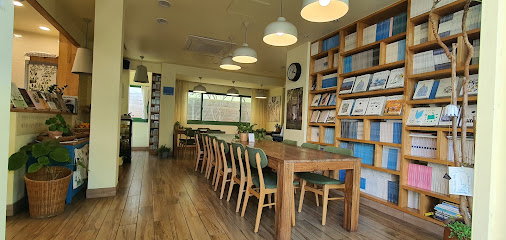
palate
2.6 km
Experience exquisite fine dining at Palate in Busan, where traditional Korean flavors meet modern culinary artistry.

Les Planches
3.1 km
Experience exquisite French cuisine at Les Planches in Busan, where culinary artistry meets stunning views in an elegant atmosphere.

Ro:ong
3.2 km
Discover Ro:ong in Busan – where delicious brunch meets vibrant atmosphere for an unforgettable dining experience.

SOL Taphouse Gwangan
3.3 km
Discover the perfect blend of delicious pizza and breathtaking ocean views at SOL Taphouse in Busan's vibrant Gwangan district.

La Bella Cita
3.5 km
Experience authentic Italian flavors at La Bella Cita in Busan - where every dish tells a story of culinary tradition.

Guess WHO Restaurant
3.6 km
Discover Guess WHO Restaurant: A premium Western dining experience with stunning coastal views in Busan.

Gwangalli Sushi And Izakaya
3.8 km
Discover exquisite sushi and izakaya delights at Gwangalli Sushi And Izakaya with breathtaking views of Busan's beautiful coastline.

Onbab
3.8 km
Discover authentic Korean flavors at Onbab in Busan's vibrant Suyeong-gu district - where tradition meets taste.
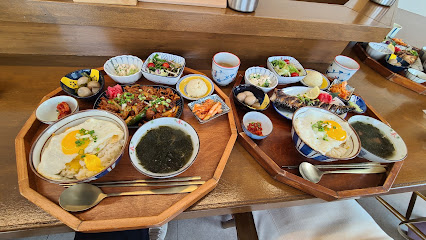
CLAM Gwangalli
3.8 km
Discover the taste of Spain at CLAM Gwangalli - where authentic cuisine meets breathtaking beach views.

Bollywood Hookah Lounge & Indian Food
3.8 km
Experience the vibrant flavors of India at Bollywood Hookah Lounge & Indian Food in Busan, where exquisite cuisine meets a lively hookah lounge ambiance.
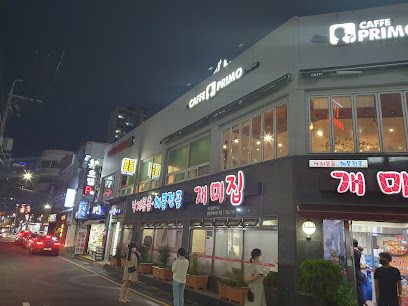
Gaemijib Gwangalli
3.9 km
Experience Busan's culinary delight at Gaemijib Gwangalli - where long legged octopus meets stunning beach views.

EL CARNITAS TACO & GRILL Gwangalli
3.9 km
Savor authentic Mexican cuisine at El Carnitas Taco & Grill in Gwangalli - where flavor meets fun by the beach.

El Carnitas
3.9 km
Experience authentic Mexican flavors at El Carnitas in Busan—where every bite transports you to Mexico.

Bronx Brewing Co.
3.9 km
Experience Busan's vibrant food scene at Bronx Brewing Co., where craft beer meets mouthwatering tacos in a lively atmosphere.

Markets, malls and hidden boutiques
Hyundai Department Store, Busan
3.6 km
Explore the vibrant Hyundai Department Store in Busan, where luxury shopping meets local culture and culinary delights.

KALON
3.9 km
Explore KALON in Busan for unique gifts and local crafts that embody the spirit of South Korean culture.

여가거가광안리
4.0 km
Explore the enchanting 여가거가광안리 in Busan for unique souvenirs and local treasures that capture the essence of your travels.

Love Actually
4.1 km
Explore Love Actually, Busan's charming souvenir store, and discover unique treasures that celebrate the city's rich culture and artistry.

Love is Giving Heart Bear
4.1 km
Discover unique gifts and heartfelt souvenirs at Love is Giving Heart Bear, a charming shop in Busan's Suyeong-gu district.

Looks Like A Bunny
4.2 km
Explore Looks Like A Bunny in Busan, a delightful gift shop filled with whimsical treasures and unique souvenirs for all ages.

Love is Giving
4.2 km
Explore Love is Giving, a charming home goods store in Busan, offering unique decor and lifestyle products that reflect local artistry and creativity.

분홍이네
4.2 km
Explore the vibrant world of unique souvenirs at 분홍이네, a hidden gem in Busan's Suyeong-gu, offering local crafts and delightful shopping experiences.

maystore SELECT SHOP
4.2 km
Explore Maystore SELECT SHOP in Busan for unique home goods that reflect local craftsmanship and contemporary design.

Object Seomyeon
4.2 km
Explore a unique selection of home goods at Object Seomyeon, where traditional Korean craftsmanship meets modern design in the heart of Busan.

POWER STATION
4.3 km
Explore Busan's vibrant music scene at POWER STATION, the ultimate record store for vinyl lovers and music enthusiasts alike.

코지모지
4.3 km
Discover a world of unique gifts at 코지모지, where local craftsmanship and creativity meet in the heart of Busan.

COSYMOSY
4.3 km
Explore the charm of Busan at COSYMOSY, a gift shop filled with unique handcrafted treasures and local artistry.

Shopping Street
4.3 km
Explore the bustling Shopping Street in Busan, a vibrant hub of culture, fashion, and delicious street food, perfect for every traveler.

이핀
4.3 km
Explore the vibrant gift shop 이핀 in Suyeong-gu, Busan, offering unique souvenirs and local treasures that capture the spirit of Korean culture.

Essential bars & hidden hideouts
OL' 55
1.5 km
Experience the vibrant nightlife of Busan at OL' 55, where local and international drinks meet a lively atmosphere.

The Vinyl Underground Live Club
1.5 km
Discover Busan's nightlife at The Vinyl Underground Live Club, where live music and vibrant energy come together for an unforgettable experience.

LA Bar&Grill
3.2 km
Discover the vibrant nightlife of Busan at LA Bar&Grill, where delicious food and refreshing drinks await in a lively atmosphere.

EVA'S in Gwanga
3.3 km
Experience the vibrant nightlife of Busan at EVA'S, a lively pub offering a welcoming atmosphere and a great selection of drinks.

Bar di.lan
3.3 km
Experience the finest wines at Bar di.lan, a charming wine bar in Busan that offers a cozy atmosphere and exceptional service.

Busan wine bar Gwanganli bar lounge vanguard
3.3 km
Experience the perfect blend of exquisite wines and authentic Italian cuisine at Gwanganli Wine Bar Lounge, a must-visit destination in Busan.

FUZZY NAVEL Gwangan
3.5 km
Discover the vibrant nightlife at Fuzzy Navel Gwangan, where delicious cocktails and stunning seaside views await in Busan's bustling bar scene.

Happy Monk
3.6 km
Discover the lively spirit of Busan at Happy Monk, a bar offering a vast selection of drinks and a vibrant atmosphere perfect for nightlife enthusiasts.

Thursday Party, Gwangalli
3.7 km
Discover the lively energy of Thursday Party in Gwangalli, Busan – a bar that blends stunning beach views with vibrant nightlife.

Sam Ryan's
3.8 km
Experience the vibrant nightlife of Busan at Sam Ryan's, where great drinks, live music, and a welcoming atmosphere come together.
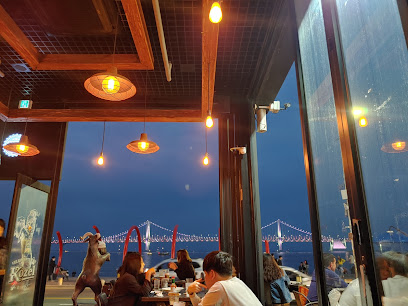
무지개맥주(Rainbow Beer) 광안리해수욕장점
3.8 km
Discover the vibrant nightlife of Busan at 무지개맥주, a premier pub located by Gwanganli Beach, offering craft beers and stunning beach views.

Tap Security Place
3.9 km
Experience Busan's vibrant nightlife at Tap Security Place, where great drinks, lively atmosphere, and unforgettable moments await you.
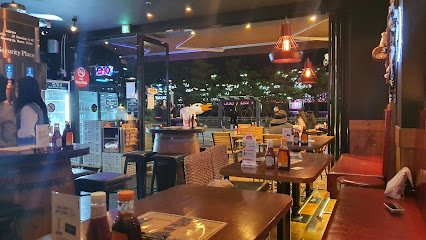
HQ Gwangan
4.2 km
Experience the vibrant nightlife of Busan at HQ Gwangan, a trendy bar with live music and a captivating atmosphere.
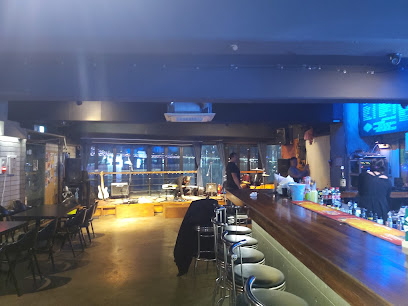
THIS WAY
4.2 km
Experience Busan's vibrant nightlife at THIS WAY, a charming bar with exceptional drinks and a cozy atmosphere perfect for every occasion.

Thursday Party, Seomyeon
4.3 km
Unleash your spirit at Thursday Party, Seomyeon – a vibrant bar in Busan offering unforgettable nightlife experiences with drinks, music, and new friends.




